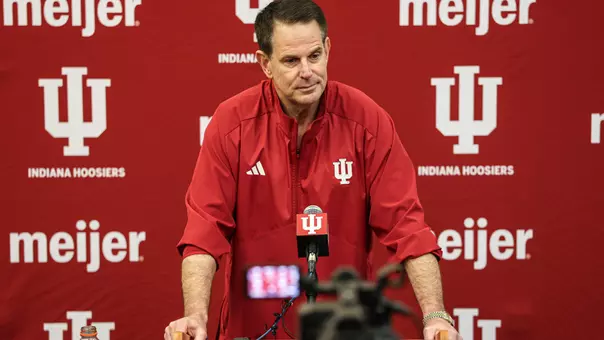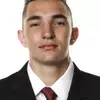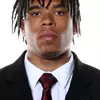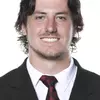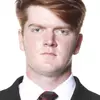Indiana University Athletics

Teegardin Aims to Put the ‘Special’ in IU Special Teams
5/8/2020 8:58:00 AM | Football
By Pete DiPrimio
IUHoosiers.com
BLOOMINGTON, Ind. – Kasey Teegardin isn't messing around.
Indiana's new special teams coordinator is a focused coach, a driven coach, a coach determined to make his unit a difference maker for sure, the Big Ten's best if possible.
"They get one play and it's got to be a game-changer," Teegardin says of his returning special teams players. "I want them to raise their level. That's been my challenge to them this offseason."
Head coach Tom Allen is right with him. So, it seems, are the Hoosiers.
Teegardin sets no limits.
"What we're doing on special teams is going to impact the entire team. That's been my biggest challenge to the team in general. Trying to motivate those guys to get them to understand the bigger picture."
Numbers add perspective.
Teegardin has studied the 2018 and '19 seasons. He says IU was 6-0 in 2019 when it won the field position battle, 2-5 when it didn't. It was 3-1 in 2018 with the field-position edge, (2-6) without it.
"When (we) win the field position battle, we're 9-1 overall. That has a direct correlation to special teams."
Looking at the teams that won the field position battle against IU is like a who's who of college football superpowers -- Penn State, Ohio State and Michigan.
"How do we take the next step and beat those teams?" Teegardin asks. "You've got to do it with great special teams play. You pin the ball deep when you need to, changing the field, breaking big returns, get the ball to midfield to start the offense."
Teegardin emphasized that point by bringing in the entire squad for his first special teams meeting.
"All I talked about was how important (special teams is). I wanted everyone to understand, quarterbacks included."
Teegardin says IU, including field goals and extra points, averaged 32 special teams snaps a game last season.
"That's a third of the game," he says. "There were some games where the defense played around 30 snaps because the offense was controlling the ball so much."
Teegardin wants to take what Indiana did the last two years under special teams coordinator William Inge (now the defensive coordinator at Fresno State) and raise the level.
He'll do it with a defensive background. He spent one season coaching special teams at Valparaiso. Other than that, it's been defense (the line, linebackers, secondary, safety and defensive coordinator in 13 coaching seasons). He's been at IU since 2014.
Special teams changes are coming, he says, but not radical ones.
"If it's not broke, don't fix it. I think we can make subtle changes and make things better. Our special teams last year was probably middle of the pack overall, but they did a lot of good things on kickoff returns, just couldn't break the big ones."
Last year, the Hoosiers averaged 19.1 yards per kickoff return to opponents' 20.0. They averaged 4.0 yards per punt return to opponents' 9.1.
IU made 19-of-23 field goals to opponents' 14-for-20. It out-punted opponents (41.7 yards to 40.9) and out-kicked them (60.8 yards and 43 touchbacks on kickoffs to opponents' 59.4 and 21).
Punter Haydon Whitehead is back after averaging a career-best 42.5 yards to earn honorable-mention All-Big Ten accolades. Fourteen of his punts were downed inside the 10-yard line. He even added a 71-yard kickoff. His 41.0-yard career punt average ranks fifth in program history.
Then there's kickoff specialist Jared Smolar, who averaged 62.2 yards per kick.
"Coach Allen has done a phenomenal job recruiting guys specifically to what we look to do in our kicking game," Teegardin says.
Veteran special teams quality control assistant Jeff McInerney has provided valuable insight.
"He has been instrumental getting me up to par with personalities and those guys," Teegardin says.
He points to Whitehead, Smolar, long snapper Sean Wracher ("the best long snapper in the Big Ten"), and kickers Charles Campbell and Jack Cardillo.
"The unit has a lot of talent. That helps so I can focus more on the schematic side in changing a few things. It makes it a lot easier having Big Ten talent at the specialist positions."
The Hoosiers had four spring practices to work on Teegardin's ideas before the pandemic shut everything down. The focus was on punting and personnel.
"We've got a lot of experience," Teegardin says. "We're more athletic than we've ever been, so we've got to utilize that."
IU will, in some unique ways.
"Just add some wrinkles. I'm going to leave it at that. I think teams will have to really study us."
David Ellis could challenge for Big Ten kick-returner-of-the-year honors. Last year as a true freshman, he averaged 20.7 yards per kickoff return, and just missed breaking a couple of big ones. The 6-foot, 210-pounder also returned one punt for nine yards, caught 16 passes for 173 yards and ran nine times for 53 yards and a touchdown.
"David Ellis is probably one or two reads away from being the top kick returner in the conference," Teegardin says.
"He has a natural instinctive vision. He does a great job of feeling the block before they're even there. He gives us an opportunity at both kick and punt returner."
IU already has Whop Philyor and Reese Taylor as punt returners. Philyor, a 1,000-yard receiver last year, returned 15 punts for 49 yards. Taylor, Indiana's 2017 Mr. Football while dominating at quarterback for Indianapolis Ben Davis, to just one return for 10 yards last season.
"I think you've easily got two of the best returners and explosive players in Reese and Whop," Teegardin says. "It's our job to coach them up better. That starts with me. I've got to get those guys more confident in what we're doing, but it also starts with the other 10 guys on the field.
"Blocking for them, drawing it up so that we can give those guys an opportunity to field the ball and then get north and south, and not feel pressure right away.
"I'm also interested to see the young guys that we have coming in. We've got a good stable of returners, it's just a matter of getting them coached up and getting the other 10 guys to do their job better."
In other words, here comes the competition heat.
"I have challenged those guys to compete with each other. I told them that no job is safe. When they're on the field, there's a lot of pressure on them.
"I want competition at every position, every play. Every season, every game, every week, I want competition. Iron sharpens iron and pressure makes diamonds."
IUHoosiers.com
BLOOMINGTON, Ind. – Kasey Teegardin isn't messing around.
Indiana's new special teams coordinator is a focused coach, a driven coach, a coach determined to make his unit a difference maker for sure, the Big Ten's best if possible.
"They get one play and it's got to be a game-changer," Teegardin says of his returning special teams players. "I want them to raise their level. That's been my challenge to them this offseason."
Head coach Tom Allen is right with him. So, it seems, are the Hoosiers.
Teegardin sets no limits.
"What we're doing on special teams is going to impact the entire team. That's been my biggest challenge to the team in general. Trying to motivate those guys to get them to understand the bigger picture."
Numbers add perspective.
Teegardin has studied the 2018 and '19 seasons. He says IU was 6-0 in 2019 when it won the field position battle, 2-5 when it didn't. It was 3-1 in 2018 with the field-position edge, (2-6) without it.
"When (we) win the field position battle, we're 9-1 overall. That has a direct correlation to special teams."
Looking at the teams that won the field position battle against IU is like a who's who of college football superpowers -- Penn State, Ohio State and Michigan.
"How do we take the next step and beat those teams?" Teegardin asks. "You've got to do it with great special teams play. You pin the ball deep when you need to, changing the field, breaking big returns, get the ball to midfield to start the offense."
Teegardin emphasized that point by bringing in the entire squad for his first special teams meeting.
"All I talked about was how important (special teams is). I wanted everyone to understand, quarterbacks included."
Teegardin says IU, including field goals and extra points, averaged 32 special teams snaps a game last season.
"That's a third of the game," he says. "There were some games where the defense played around 30 snaps because the offense was controlling the ball so much."
Teegardin wants to take what Indiana did the last two years under special teams coordinator William Inge (now the defensive coordinator at Fresno State) and raise the level.
He'll do it with a defensive background. He spent one season coaching special teams at Valparaiso. Other than that, it's been defense (the line, linebackers, secondary, safety and defensive coordinator in 13 coaching seasons). He's been at IU since 2014.
Special teams changes are coming, he says, but not radical ones.
"If it's not broke, don't fix it. I think we can make subtle changes and make things better. Our special teams last year was probably middle of the pack overall, but they did a lot of good things on kickoff returns, just couldn't break the big ones."
Last year, the Hoosiers averaged 19.1 yards per kickoff return to opponents' 20.0. They averaged 4.0 yards per punt return to opponents' 9.1.
IU made 19-of-23 field goals to opponents' 14-for-20. It out-punted opponents (41.7 yards to 40.9) and out-kicked them (60.8 yards and 43 touchbacks on kickoffs to opponents' 59.4 and 21).
Punter Haydon Whitehead is back after averaging a career-best 42.5 yards to earn honorable-mention All-Big Ten accolades. Fourteen of his punts were downed inside the 10-yard line. He even added a 71-yard kickoff. His 41.0-yard career punt average ranks fifth in program history.
Then there's kickoff specialist Jared Smolar, who averaged 62.2 yards per kick.
"Coach Allen has done a phenomenal job recruiting guys specifically to what we look to do in our kicking game," Teegardin says.
Veteran special teams quality control assistant Jeff McInerney has provided valuable insight.
"He has been instrumental getting me up to par with personalities and those guys," Teegardin says.
He points to Whitehead, Smolar, long snapper Sean Wracher ("the best long snapper in the Big Ten"), and kickers Charles Campbell and Jack Cardillo.
"The unit has a lot of talent. That helps so I can focus more on the schematic side in changing a few things. It makes it a lot easier having Big Ten talent at the specialist positions."
The Hoosiers had four spring practices to work on Teegardin's ideas before the pandemic shut everything down. The focus was on punting and personnel.
"We've got a lot of experience," Teegardin says. "We're more athletic than we've ever been, so we've got to utilize that."
IU will, in some unique ways.
"Just add some wrinkles. I'm going to leave it at that. I think teams will have to really study us."
David Ellis could challenge for Big Ten kick-returner-of-the-year honors. Last year as a true freshman, he averaged 20.7 yards per kickoff return, and just missed breaking a couple of big ones. The 6-foot, 210-pounder also returned one punt for nine yards, caught 16 passes for 173 yards and ran nine times for 53 yards and a touchdown.
"David Ellis is probably one or two reads away from being the top kick returner in the conference," Teegardin says.
"He has a natural instinctive vision. He does a great job of feeling the block before they're even there. He gives us an opportunity at both kick and punt returner."
IU already has Whop Philyor and Reese Taylor as punt returners. Philyor, a 1,000-yard receiver last year, returned 15 punts for 49 yards. Taylor, Indiana's 2017 Mr. Football while dominating at quarterback for Indianapolis Ben Davis, to just one return for 10 yards last season.
"I think you've easily got two of the best returners and explosive players in Reese and Whop," Teegardin says. "It's our job to coach them up better. That starts with me. I've got to get those guys more confident in what we're doing, but it also starts with the other 10 guys on the field.
"Blocking for them, drawing it up so that we can give those guys an opportunity to field the ball and then get north and south, and not feel pressure right away.
"I'm also interested to see the young guys that we have coming in. We've got a good stable of returners, it's just a matter of getting them coached up and getting the other 10 guys to do their job better."
In other words, here comes the competition heat.
"I have challenged those guys to compete with each other. I told them that no job is safe. When they're on the field, there's a lot of pressure on them.
"I want competition at every position, every play. Every season, every game, every week, I want competition. Iron sharpens iron and pressure makes diamonds."
Players Mentioned
FB: Curt Cignetti - Pre-Rose Bowl Game Virtual Teleconference
Monday, December 22
FB: Fernando Mendoza - Heisman Trophy Press Conference (12/15/25)
Monday, December 15
FB: Curt Cignetti - Pre-Heisman Press Conference
Wednesday, December 10
FB: Fernando Mendoza - Pre-Heisman Press Conference
Tuesday, December 09

